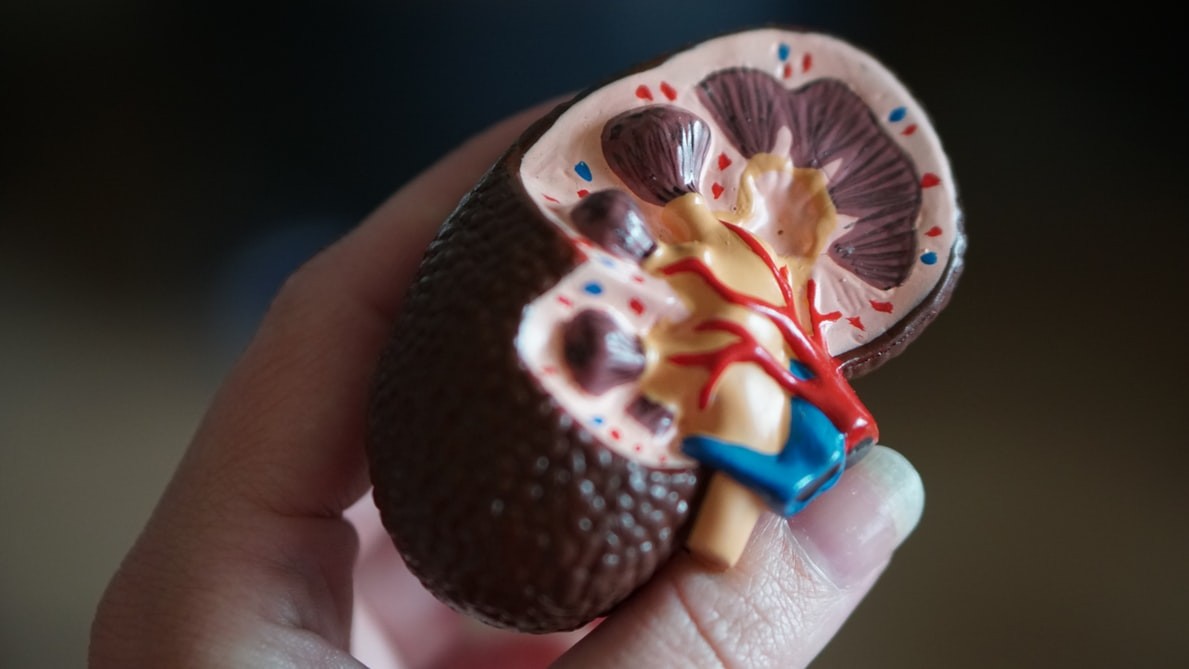
UC study: Comparing pregnancy rates in patients undergoing two types of dialysis
Findings could help patients, providers make more informed decisions about their reproductive health
Among patients with end-stage kidney disease (ESKD) on home dialysis, pregnancy rates are higher with home hemodialysis than peritoneal dialysis, according to new research from the University of Cincinnati.
The study, published in the journal KI Reports, finds an overall pregnancy rate of almost 9 people per thousand (PTPY) over a year’s time. Compared to women on peritoneal dialysis, women on home hemodialysis are slightly more than twice as likely to become pregnant.
Hemodialysis involves use of a filtering machine to remove waste and extra fluid from a patient’s blood and then returning the filtered blood into their body; peritoneal dialysis involves a patient’s blood being filtered inside their own body through a catheter that is surgically placed in the belly instead of using a dialyzer machine.

Silvi Shah, MD, of the Division of Nephrology at the UC College of Medicine/Photo/Colleen Kelley/UC Creative + Brand
“Childbearing is an integral part of a woman's life. However, ESKD disrupts this critical element due to impaired fertility making pregnancy uncommon in women on dialysis, and those who become pregnant face risk of adverse maternal and fetal outcomes,” says Silvi Shah, MD, assistant professor in the Division of Nephrology at UC and the lead author of the study. “However, this information will help patients and health care providers in shared decision-making regarding management of their reproductive health.
“Since data is so scarce for pregnancy in women undergoing home dialysis, we examined the rates, racial and ethnic differences and factors associated with pregnancy in this high-risk population.”
The study evaluated 26,837 women of childbearing age undergoing home dialysis between Jan. 1, 2005, and Dec. 31, 2018, using United States Renal Data System data. Overall, 437 pregnancies were identified. The pregnancy rate was almost 9 people per thousand over a year’s time, with a higher rate of home hemodialysis than peritoneal dialysis (16 vs. 7.5 PTPY). Black women had a nearly one and a half times higher likelihood to get pregnant as compared to White women. Younger age was also associated with a higher likelihood of pregnancy.
Shah says the study is unique in that it addresses a comprehensive racial group of home dialysis patients to better understand the incidence of pregnancy, and factors associated among home dialysis patients. The study further considered patients with complete Medicare coverage, thus avoiding the potential shortfalls of registries dependent on voluntary reporting or patient recall.
The information will help us to counsel our patients and be involved in shared decision making with regards to choice of home dialysis method.
Silvi Shah, MD
This research shows for the first time the rates of pregnancy with kidney failure on home dialysis and that pregnancy rates in women on home hemodialysis are higher than peritoneal dialysis.
“This tells us that additional factors contribute to these differences by type of home dialysis modality. While we can speculate that dialysis prescriptions and hypertonic dextrose solutions have an important role, the real reasons remain unknown,” says Shah. “We wanted to study this due to little information available on pregnancy in the home dialysis population. The information will help us to counsel our patients and be involved in shared decision making with regards to choice of home dialysis method.”
A previously-published study led by Shah showed that among patients with ESKD, there is a racial disparity as to who is more likely to become pregnant. Native American, Hispanic and black women have a higher likelihood of pregnancy than white women. Read more about that research.
Assisting Shah in the research were Annette Christianson, Anthony Leonard, and Brenna Rachwal, of the Department of Environmental Health, UC College of Medicine; Prasoon Verma, Division of Neonatology, Cincinnati Children’s Hospital Medical Center; Eric Weinhandl, University of Minnesota and Satellite Healthcare, and Jeffery Perl, University of Toronto. Shah is supported by the K23 Career Development award from the National Institutes of Health.
Lead photo/iStock
Next Lives Here
The University of Cincinnati is classified as a Research 1 institution by the Carnegie Commission and is ranked in the National Science Foundation's Top-35 public research universities. UC's graduate students and faculty investigate problems and innovate solutions with real-world impact. Next Lives Here.
Related Stories
How do bats tell insects from leaves? Ask a robot
January 14, 2026
Why do researchers think big-eared bats can find hidden insects without having to scrutinize every leaf in a forest? Their robot can do it.
Pylos: From princes to a palace in Messenia
January 13, 2026
World Archaeology Magazine highlights discoveries from ancient Greece such as the Griffin Warrior by UC Classics Professor Jack Davis and Senior Research Associate Sharon Stocker. Many of the artifacts from their discoveries went on display last year in North America for the first time with an exhibit at the Getty Museum.
Hoxworth Blood Center honors MLK with annual blood drive, community partnership, bonus for donors
January 12, 2026
Hoxworth Blood Center, University of Cincinnati, is honoring the legacy of Dr. Martin Luther King Jr. by turning his message of service into action. One powerful way to do that is by donating with Hoxworth on MLK Day and helping save patients at local hospitals.
